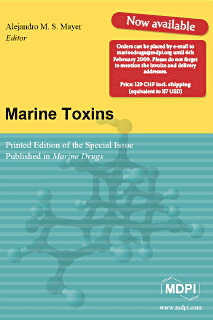Open AccessArticle
Evaluation of Harmful Algal Bloom Outreach Activities
by
Lora E. Fleming, Eva Jerez, Wendy Blair Blair Stephan, Amy Cassedy, Judy A. Bean, Andrew Reich, Barbara Kirkpatrick, Lorraine Backer, Kate Nierenberg, Sharon Watkins, Julie Hollenbeck and Richard Weisman
Cited by 21 | Viewed by 13312
Abstract
With an apparent increase of harmful algal blooms (HABs) worldwide,healthcare providers, public health personnel and coastal managers are struggling toprovide scientifically-based appropriately-targeted HAB outreach and education. Since1998, the Florida Poison Information Center-Miami, with its 24 hour/365 day/year freeAquatic Toxins Hotline (1-888-232-8635) available in
[...] Read more.
With an apparent increase of harmful algal blooms (HABs) worldwide,healthcare providers, public health personnel and coastal managers are struggling toprovide scientifically-based appropriately-targeted HAB outreach and education. Since1998, the Florida Poison Information Center-Miami, with its 24 hour/365 day/year freeAquatic Toxins Hotline (1-888-232-8635) available in several languages, has received over 25,000 HAB-related calls. As part of HAB surveillance, all possible cases of HAB-relatedillness among callers are reported to the Florida Health Department. This pilot studyevaluated an automated call processing menu system that allows callers to access bilingualHAB information, and to speak directly with a trained Poison Information Specialist. Themajority (68%) of callers reported satisfaction with the information, and many provided specific suggestions for improvement. This pilot study, the first known evaluation of use and satisfaction with HAB educational outreach materials, demonstrated that the automated system provided useful HAB-related information for the majority of callers, and decreased the routine informational call workload for the Poison Information Specialists, allowing them to focus on callers needing immediate assistance and their healthcare providers. These results will lead to improvement of this valuable HAB outreach, education and surveillance tool. Formal evaluation is recommended for future HAB outreach and educational materials.
Full article
►▼
Show Figures







